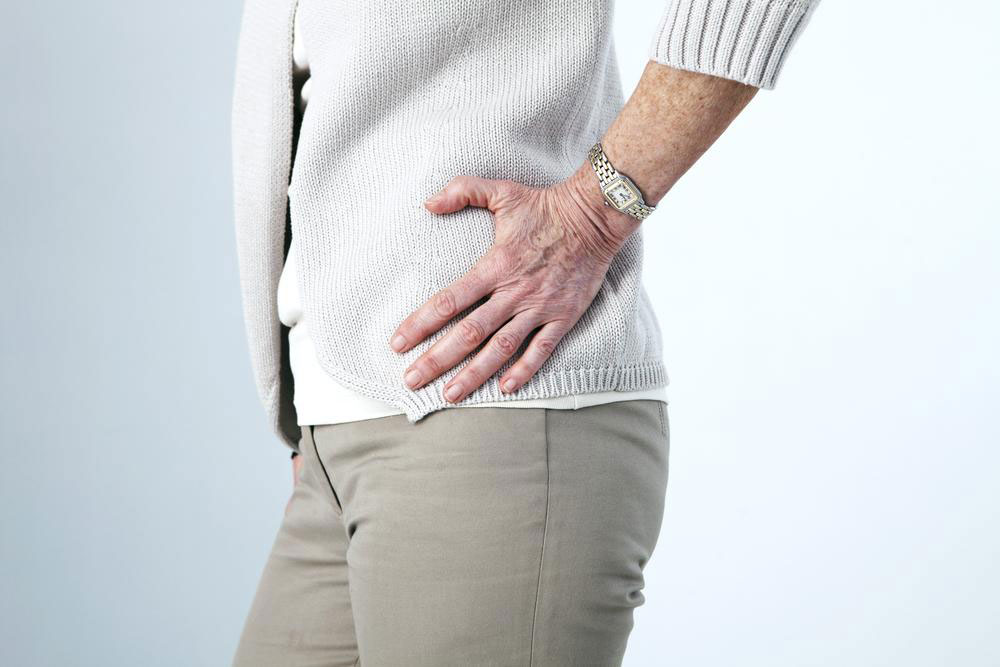Hip Bursitis – Causes, Risk Factors, Symptoms, and Treatment

The hip joint is one of the strongest joints of the human body. It helps us to stand and walk and absorbs the impact when we jump. However, it is not immune to wear and tear. Hip bursitis or the inflammation of a bursa in the hip is one of the common causes of hip pain. Prescription medication is not always required for relief from hip bursitis.
What is hip bursitis?
Sacs filled with fluid that reduce the friction between tissues as they move are known as bursae. The major bursae are located at large joints such as the hips, shoulders, elbows, and knees. There are two bursae in the hip, the trochanteric bursa on the outer hip and the iliopsoas bursa on the inner side of the hip. Inflammation of the bursa is known as bursitis. This is not infectious but it may become infected.
Causes of hip bursitis
It becomes easier to seek relief for hip bursitis if one understands the factors causing it. The most common causes of hip bursitis are as follows:
- Injury to the hip
Falling on the hip or banging the hip on a hard surface can lead to blood being filled in the bursa and inflammation of the bursa lining. While the blood may be later reabsorbed by the body, the lining stays inflamed for much longer. This is also known as traumatic bursitis.
- Repetitive hip trauma
Sometimes even minor trauma to the hip can cause hip bursitis if it occurs repeatedly. These are known as mini-traumas . People who run or bike have a higher risk of hip bursitis caused by such mini-traumas .
- Gout and rheumatoid arthritis
Rheumatoid arthritis affects the outer lining or the synovial membrane of the bursa. Similarly, gout causes the accumulation of urate crystals in the synovial membrane. This may, in turn, cause inflammation and lead to bursitis.
Risk factors of hip bursitis
- Gender
Women have a higher risk of hip bursitis as compared to men.
- Age
People between the age of 40 and 70 years have the highest risk of hip bursitis. However, this may affect people of any age.
- Biomechanical issues
People with biomechanical issues of the legs such as knee osteoarthritis, scoliosis, tenderness of the iliotibial band or one leg significantly shorter than the other may have a higher risk of bursitis. This is because the way they walk can irritate and cause inflammation of the bursa. Similarly, bone spurs and calcium deposits in the joints can also cause bursitis.
- Previous surgery
Any earlier surgery on the hip joint can increase the risk of hip bursitis.
- Infections
People suffering from infections such as HIV, AIDS, lupus, diabetes, chronic obstructive pulmonary disease or alcoholism that compromises their immune system have a high risk of bursitis.
Symptoms and diagnosis of hip bursitis
Hip pain is one of the main symptoms expressed by patients seeking relief from hip bursitis. Before prescribing treatment, the doctor must be able to rule out other causes of hip pain. For this, they will ask about the patient’s medical history, conduct a physical examination of the affected hip, and conduct physical tests such as asking the patient to stand on one leg, lab tests, and X-rays. In some cases, an MRI may also be required.
Treatment for hip bursitis
Treatment for hip bursitis is aimed at providing relief from the pain and controlling the bursa inflammation. In many cases, simply resting the joint can provide relief from hip bursitis. This is noticed especially in cases of bursitis stemming from overuse, injury or trauma. In cases where the condition is caused by an infection, antibiotics may be prescribed. Sometimes, antibiotics may be prescribed even if the lab tests for infection have negative results. Applying an ice pack over the affected hip can also help control inflammation and pain. If this does not provide relief from hip bursitis, other forms of treatment may be advised such as the following.
Aspiration
If the swelling is substantial, a needle may be used to drain the fluid in the bursa and relieve inflammation.
Corticosteroid injections
Corticosteroid injections are usually given when a bursa is drained. In addition, this may be prescribed if physical therapy and over the counter medications do not provide relief to the patient.
Physical therapy
Physical therapy can help to strengthen the hip muscles and treat and prevent hip bursitis in the future.
Antibiotics
Antibiotics are usually prescribed in the case of septic bursitis. These medicines are given orally and may vary depending on the microorganism causing the infection. Hospitalization and intravenous administration of medication may be required in severe cases.
Surgery
Surgery is rarely needed. The typical surgeries advised for severe hip bursitis relief are as follows:
- Bursectomy – Removal of the affected bursa
- Tendon repair and iliotibial band release – Surgical correction of a tendon called the Iliotibial band
- Osteotomy of the greater trochanter – Shaving off about 5–10 mm of the bone to reduce friction and stress



